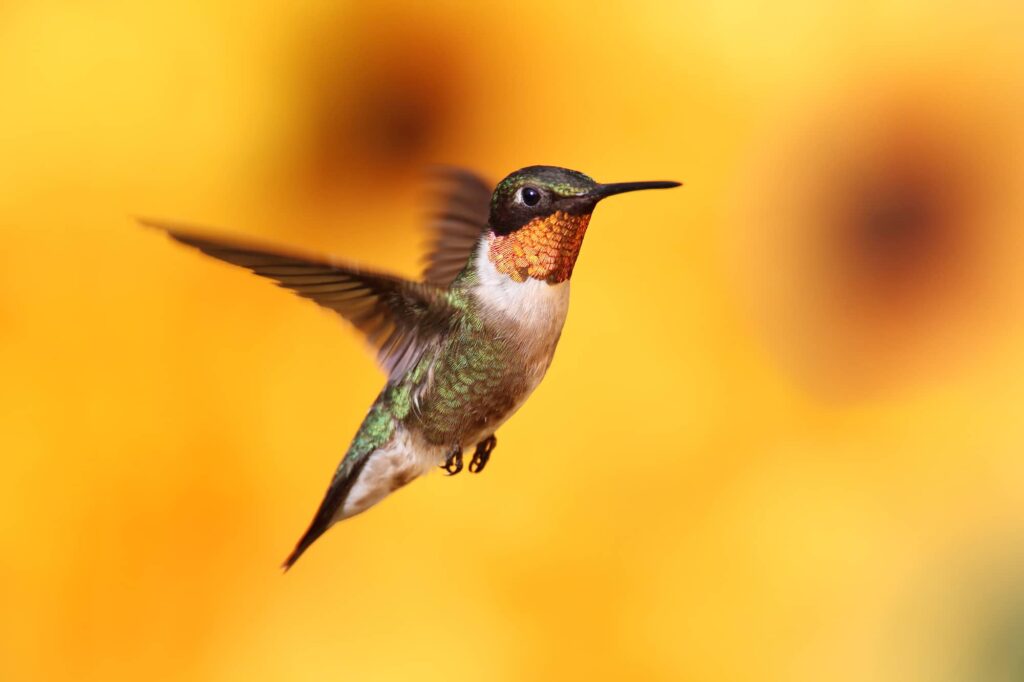Beloved Pennsylvania is well known as the Keystone State thanks to its critical role in building the foundations of the USA. As one of America’s north-eastern states, it showcases the Appalachian Mountains, 83,000 miles of river, and pretty impressive fall colors!
More so, Pennsylvania is known for its simplistic and traditional culture with industrial roots and breathtaking historical buildings, making it a peaceful weekend getaway.
This state truly offers something for everyone, from the historic attractions to the bountiful parks and open country areas.
Whether you are a local or a mere visitor, all birders will enjoy keeping an eye out for the seven hummingbird species in Pennsylvania. So, let’s look at these unique, tiny, beautiful birds.
Bahama Woodstar Hummingbird (Nesophlox evelynae)
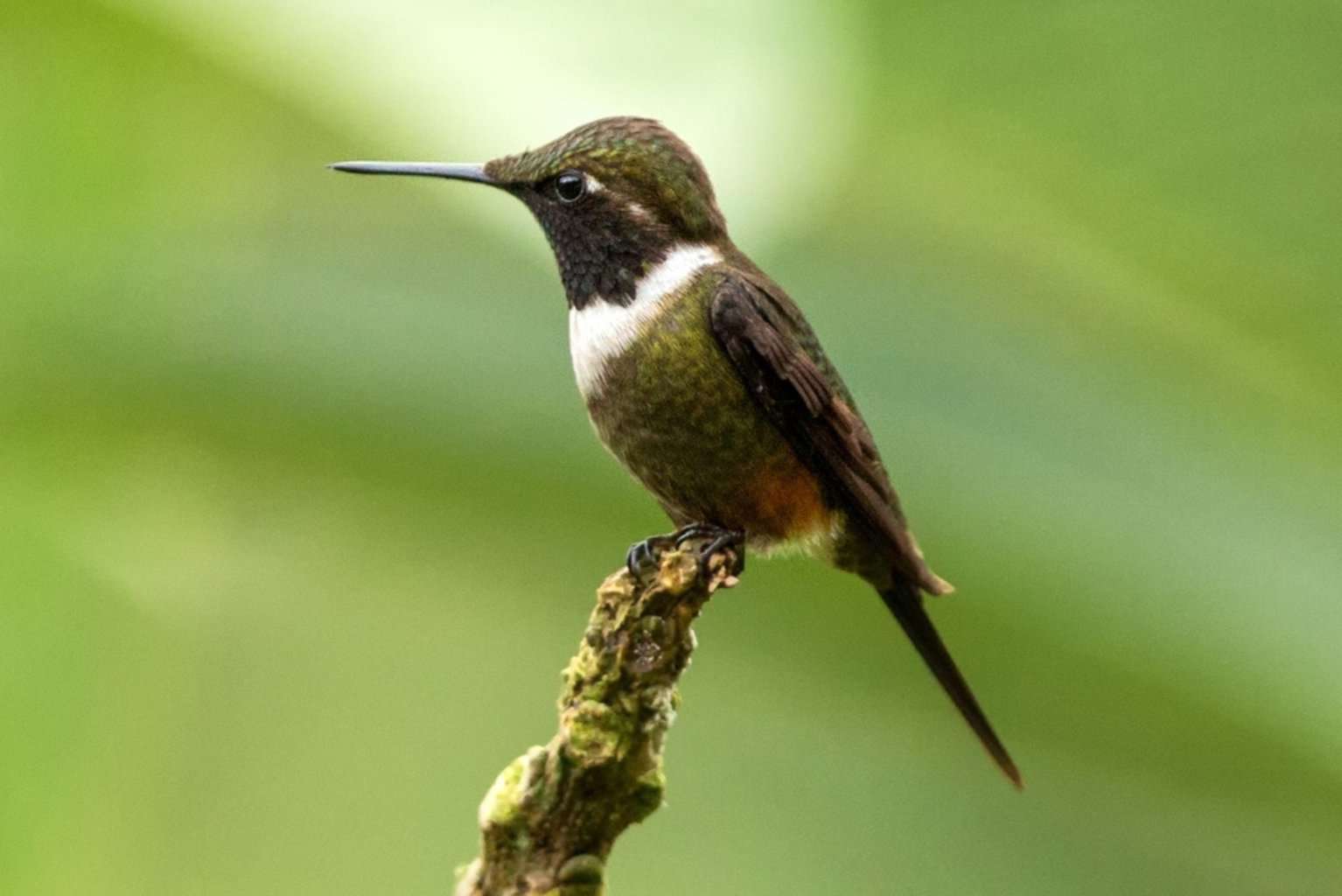
- Length: 1 to 3.7 inches
- Weight: 085 to 0.11 ounces
- Wingspan:25 inches
Description:
The male Bahama Woodstar Hummingbird has a green and gold back with an olive-buff underpart and flanks that fade into white.
In addition, the male Bahama Woodstar has a forked-shaped tail and a vibrant purple iridescent gorget with a white lining.
The female Bahama Woodstar displays a similar green-gold back and olive underparts. However, her flanks fade into cinnamon instead of white. In addition, she has a rounded tail with broader feathers and lacks a purple throat.
Additional Information:
As the name suggests, the Bahama Woodstar is expected in the Bahama Islands. Although it isn’t typically a migratory bird, it has been found zipping around in the eastern areas of the United States, making it an accidental visitor to Pennsylvania.
The locals call the Bahama Woodstar the “Hummer” due to the distinct sound that it executes while feeding. It displays three different vocalizations, including chips, spurts, and cheeps.
Bahama Woodstar Hummingbirds mainly feed on sweet nectar from vibrantly colored flowers of herbs, shrubs, trees, and epiphytes.
Ruby-Throated Hummingbird (Archilochus colubris)
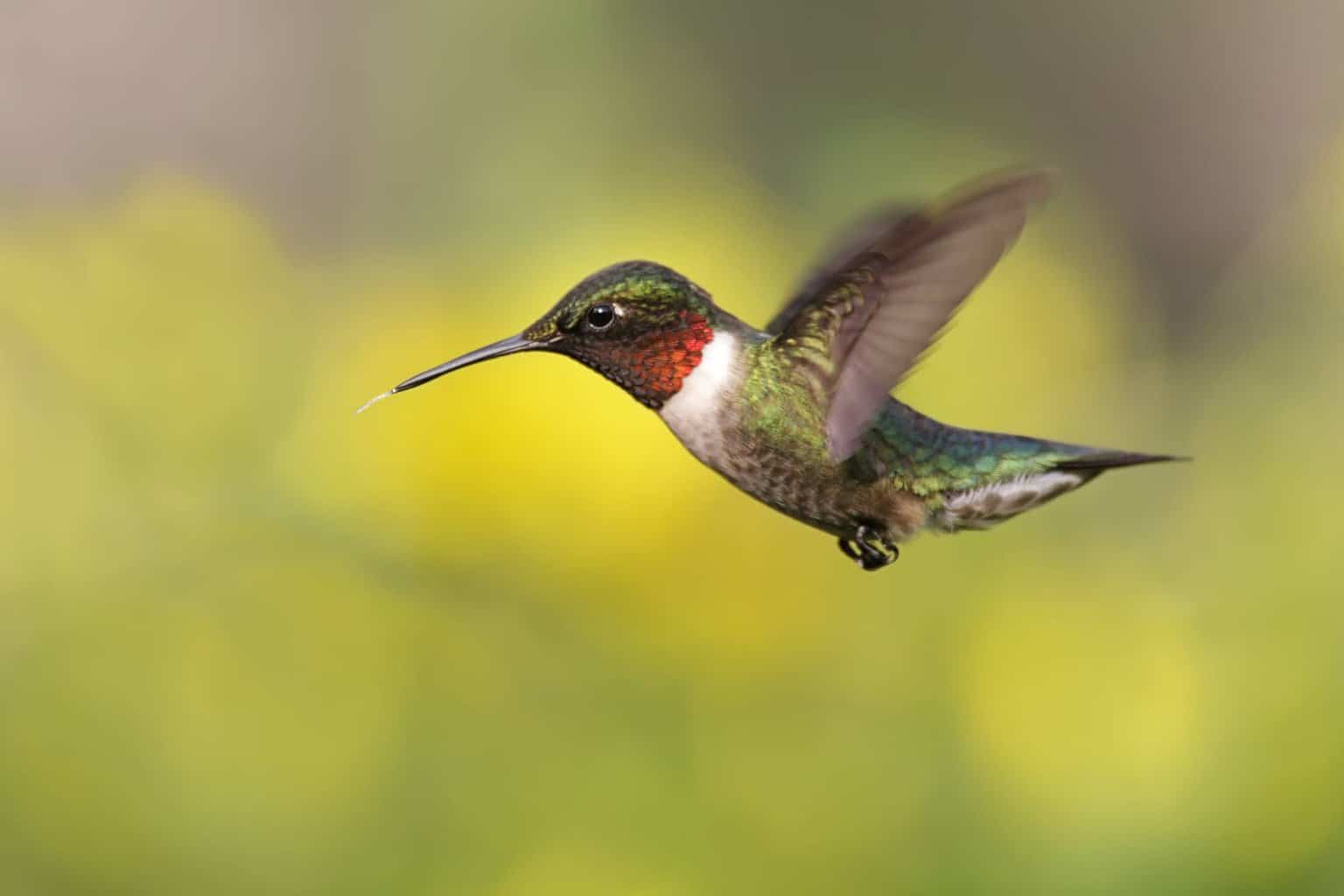
- Length: 8 to 3.5 inches
- Weight: 12 ounces for males and 0.13 ounces for females
- Wingspan: 1 to 4.3 inches
Description:
The male Ruby-throated Hummingbird generally has a dark, almost black face with a slender bill and a vibrant ruby-red gorget that appears darker in areas with poor lighting.
More so, a male displays a grayish-white chest, metallic green flanks and crown, and a forked tail.
In comparison, the female Ruby-throated Hummingbird has a plain throat with light white markings or dusky streaks and slight buff flanks.
In addition, the sides are a duller shade of grayish-green and less brilliant than the males, and she has a notched tail instead of the usual deeply forked tail of the male bird.
Additional Information:
Ruby-throated Hummingbirds tend to breed in the eastern United States and migrate to Central America and Mexico for the winter. Therefore, as native breeders in Pennsylvania, they arrive in April and depart to their wintering grounds in late September.
The Ruby-throated Hummingbird mainly relies on nectar-rich flowers or small flying insects to fuel their active lifestyle. So, if you stay in Pennsylvania, consider planting vibrant, tubular flowers to attract these whimsical birds to your backyard.
Adult Ruby-throated Hummingbirds are typically not social other than during courtship. Instead, both males and females tend to behave aggressively by using unique acrobatic aerial and dive displays toward other hummingbirds to defend their territory and food sources.
Despite weighing as little as one US penny, Ruby-throated Hummingbirds travel an endless, 500-mile journey across the Gulf of Mexico during their migrations.
Black-Chinned Hummingbird (Archilochus alexandri)
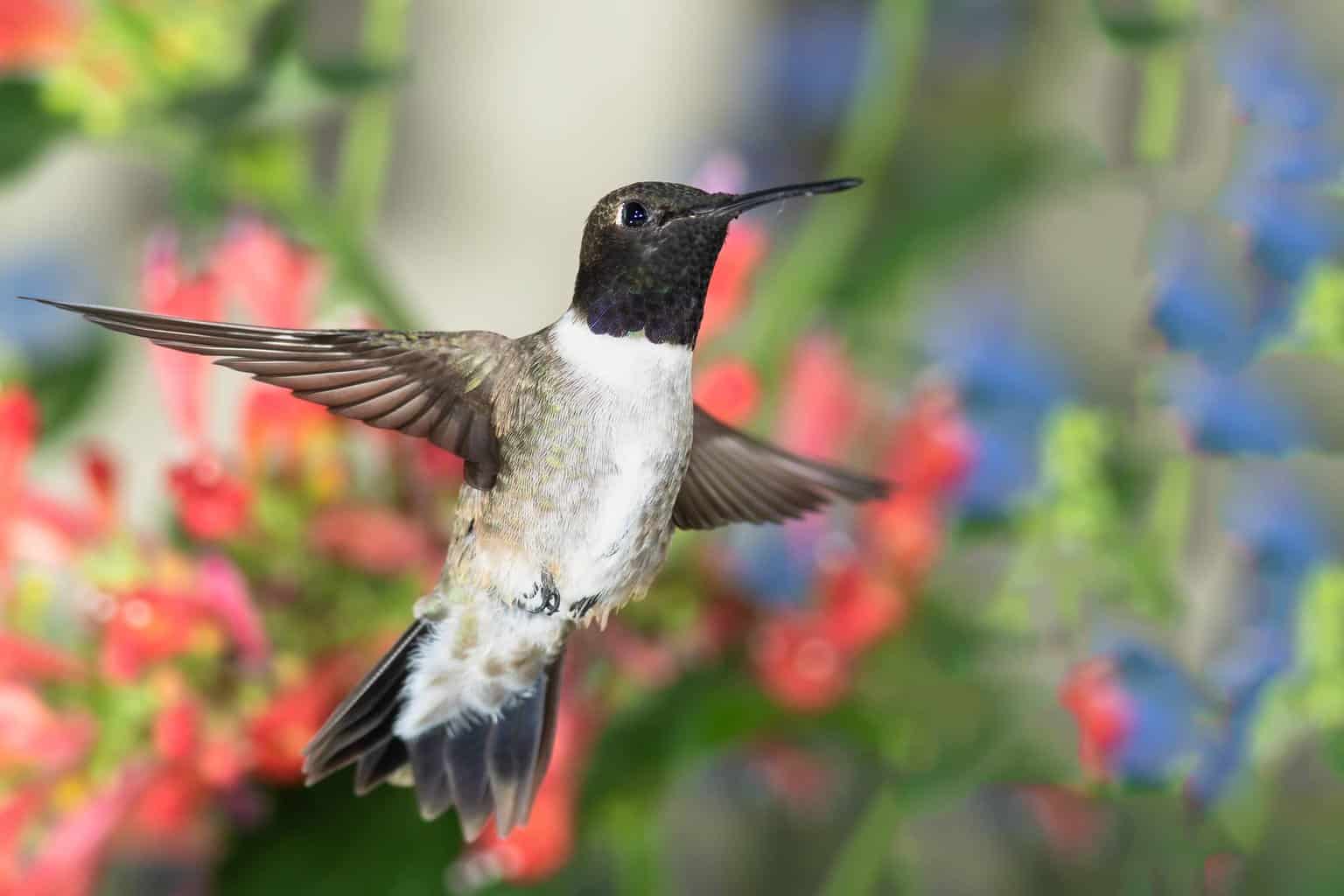
- Length: 25 inches
- Weight: 98 to 0.11 ounces
- Wingspan:4 to 5 inches
Description:
The male Black-chinned Hummingbird showcases a greenish-gray crown, back, and flanks, with a distinctive black chin (hence its common name) and a white spot right behind its eyes.
Additionally, he has a glossy purple band with a contrasting white collar around the bottom of its gorget.
The female Black-chinned Hummingbird has similar markings, including the distinctive black chin; however, she has faint green streaks displayed on her white throat.
Additional Information:
Although a scarce sight to Pennsylvania, the Black-chinned Hummingbird has been seen accidentally roaming through the state’s mountainous areas and parks.
The male and female hummingbirds typically use different habitats from each other for their breeding territories.
More so, Black-chinned Hummingbirds tend to exhibit territorial behavior around feeders and small feeding sites, and they typically become more defensive as the breeding season continues.
These hummingbirds also make use of unique diving displays, performing dives up to 40 to 60 feet for territory defense and courtship.
Anna’s Hummingbird (Calypte anna)
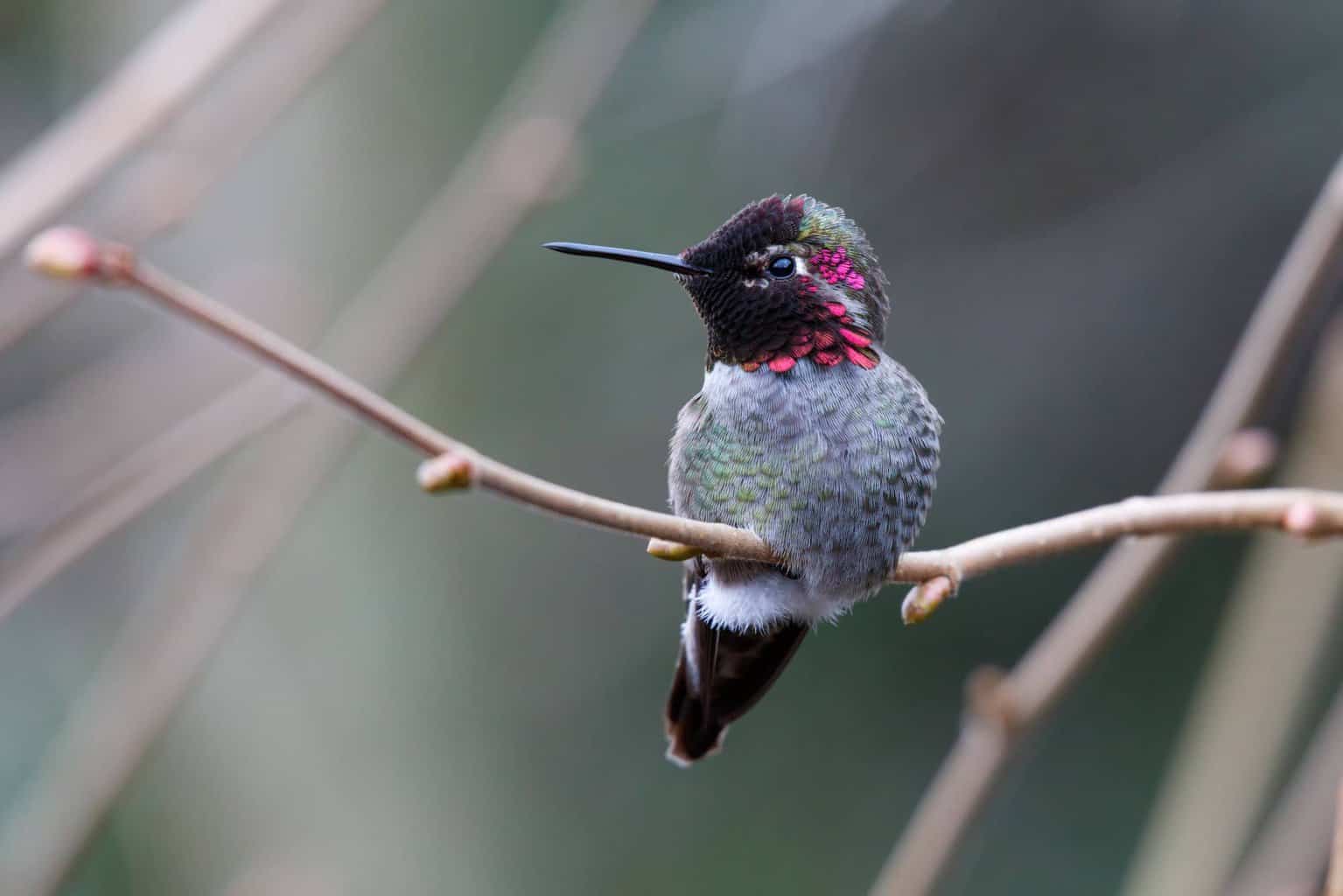
- Length: 9 to 4.3 inches
- Weight: 09 to 0.2 ounces
- Wingspan: 7 inches
Description:
The male Anna’s Hummingbird has an iridescent bronze-green back, pale gray chest and belly, green flanks, a magenta or crimson-red crown, and a gorget appearing almost dull without direct sunlight.
In comparison, the female Anna’s Hummingbird has a pale chest with white and red spotting on her gorget, a green back, and a white-tipped tail.
Additionally, the male juvenile Anna’s resemble the females and gradually grow into their adult iridescent ruby hoods.
Additional Information:
Anna’s Hummingbirds are a scarce and accidental species to Pennsylvania and have only been spotted a handful of times.
Anna’s Hummingbirds are famous for their territorial behavior; they make elaborate and dramatic dive displays along with a burst of noise trailing from their tail feathers.
Anna’s Hummingbirds are of the most vocal hummingbirds in the United States and one of few species of hummingbirds that produce a unique song with a series of scratchy noises sounding like sharp metallic “chip” vocalizations.
Anna’s Hummingbird gets its common name after the 19th-century Italian duchess Anna Massena.
Calliope Hummingbird (Stellula calliope)
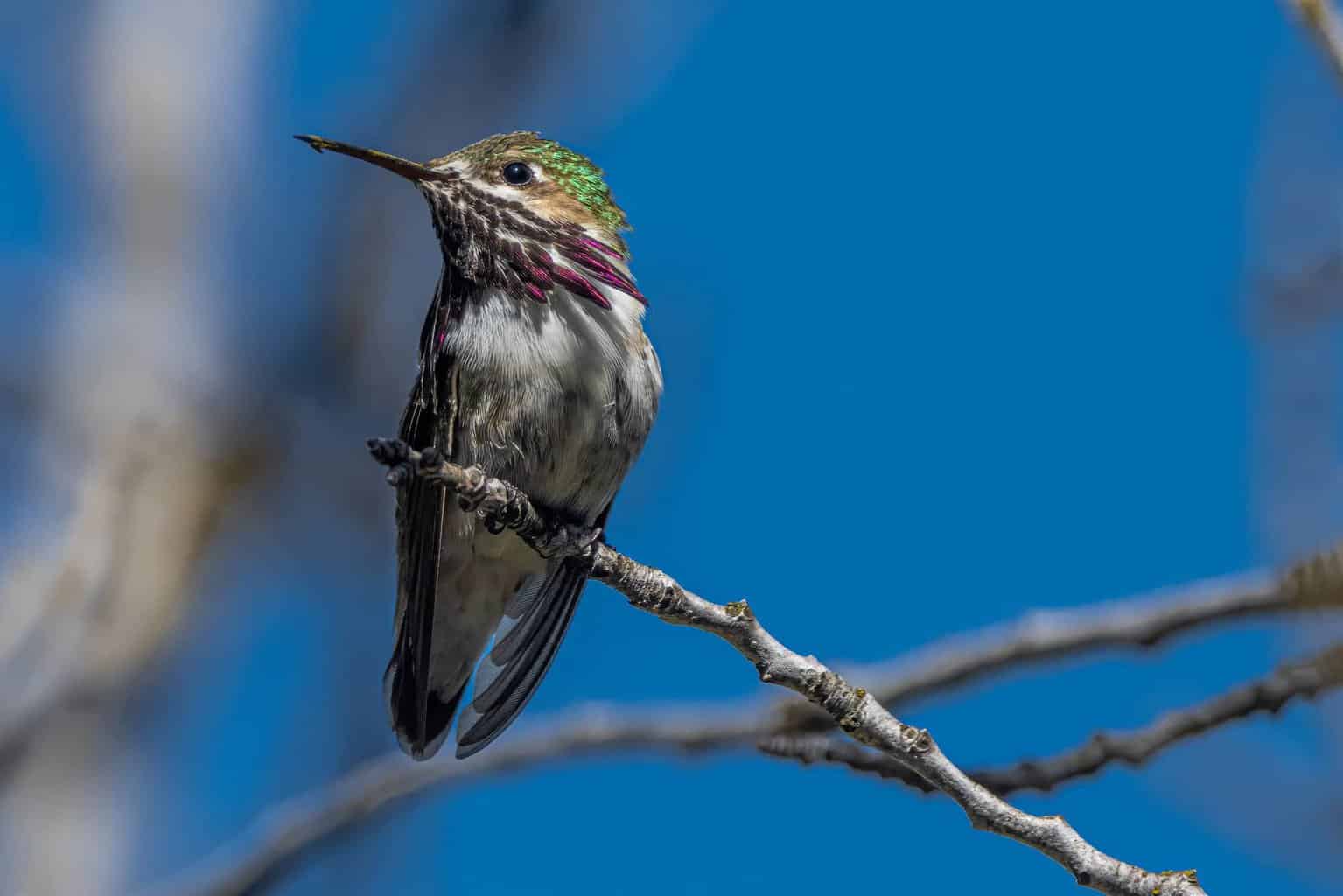
- Length: 8 to 3.9 inches
- Weight: 07 to 0.1 ounces
- Wingspan: 3 inches
Description:
An adult male Calliope Hummingbird displays an iridescent green upper plumage and a whitish gorget embellished with elongated iridescent wine-red throat feathers that showcase a “whiskered” effect when erected. He also has green flanks and a dark tail.
In comparison, the adult female displays a dull whitish throat with dark streaks, a cinnamon-buff-colored chest, a pinkish wash on her flanks, and a dark tail with white tips.
Additional Information:
Calliope Hummingbirds are a rare sight in Pennsylvania. They are also the smallest breeding birds in Canada and the United States.
More so, they are the smallest-bodied long-distance migrants worldwide, weighing under one ounce (about the same weight as a ping pong ball).
As migratory birds, this type of hummingbird typically flies to its breeding ground earlier than most other hummingbird species.
The male Calliope Hummingbirds are defensive and vigorously protect their nesting territory while breeding; however, they are well off to Mexico before the younglings hatch.
The common name of the Calliope Hummingbird comes from Calliope, the muse of eloquence and poetry, inspiring Homer’s Iliad and Odyssey!
Rufous Hummingbird (Selasphorus rufus)
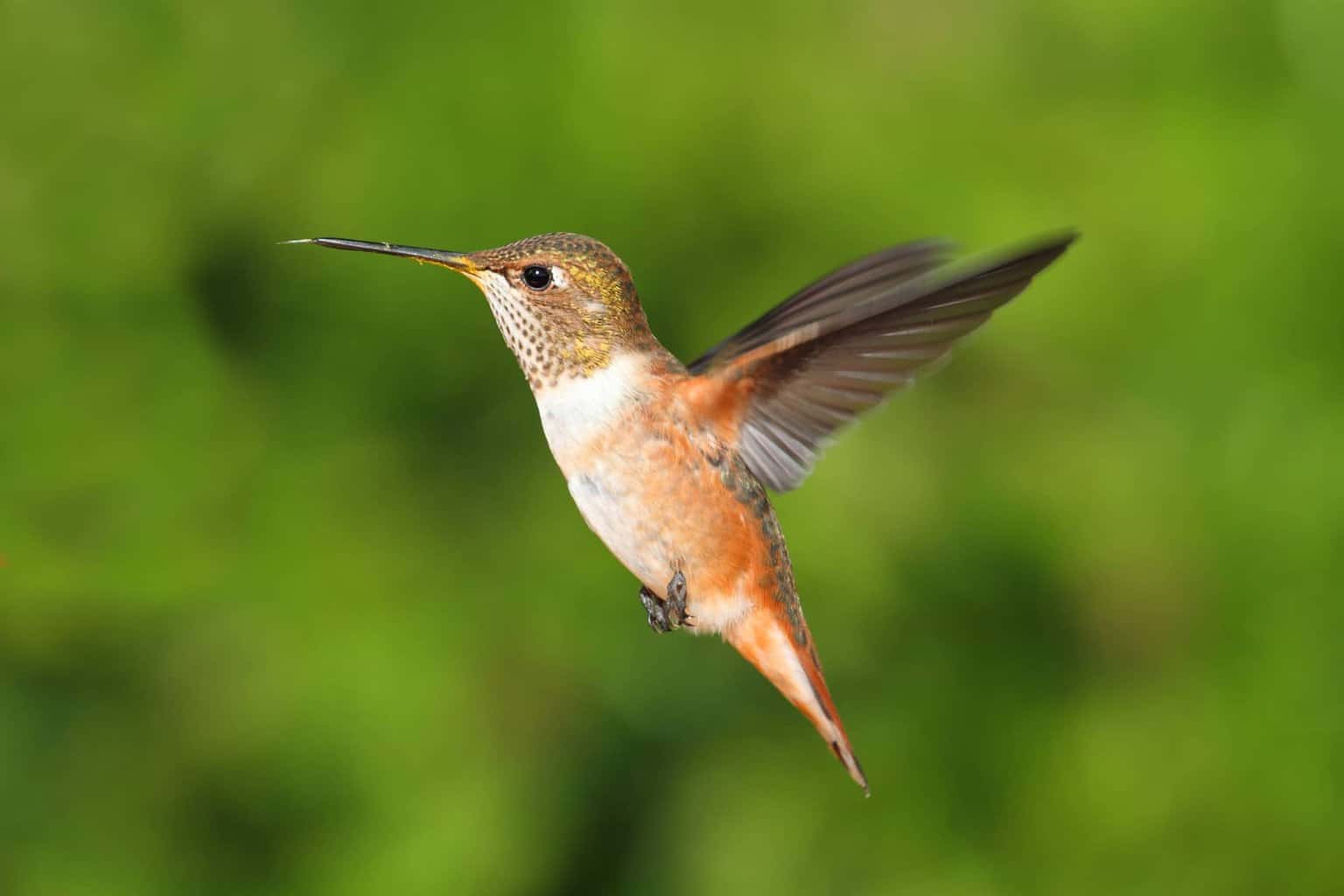
- Length: 5 inches
- Weight: 07 to 0.17 ounces
- Wingspan: 3 inches
Description:
The male Rufous Hummingbird has a rusty, coppery head, flanks, and back, as well as an iridescent orange-red throat patch.
However, around five to ten percent of males have an emerald green wash on their crown and back.
The female Rufous displays a green crown and back, and a white, somewhat speckled throat with a central orange-red splotch.
More so, the female showcases a buff chest and sides and dark green tail feathers with a rusty, rufous base.
Additional Information:
The Rufous Hummingbird is a pretty regular visitor to Pennsylvania. You can attract these whimsical birds to your garden by planting nectar-rich flowers or hummingbird feeders.
However, Rufous Hummingbirds are famous for their highly aggressive nature around food sources, so you may want to strategically place multiple and widely spread feeders around your garden to prevent fights.
They also produce a variety of threat displays, including impressive dives, tail fanning, and high-pitched, chipping vocalizations.
Despite their petite bodies, Rufous Hummingbirds complete the longest migration route of all birds in the United States, traveling a prodigious 2,000-mile journey one way!
Allen’s Hummingbird (Selasphorus sasin)
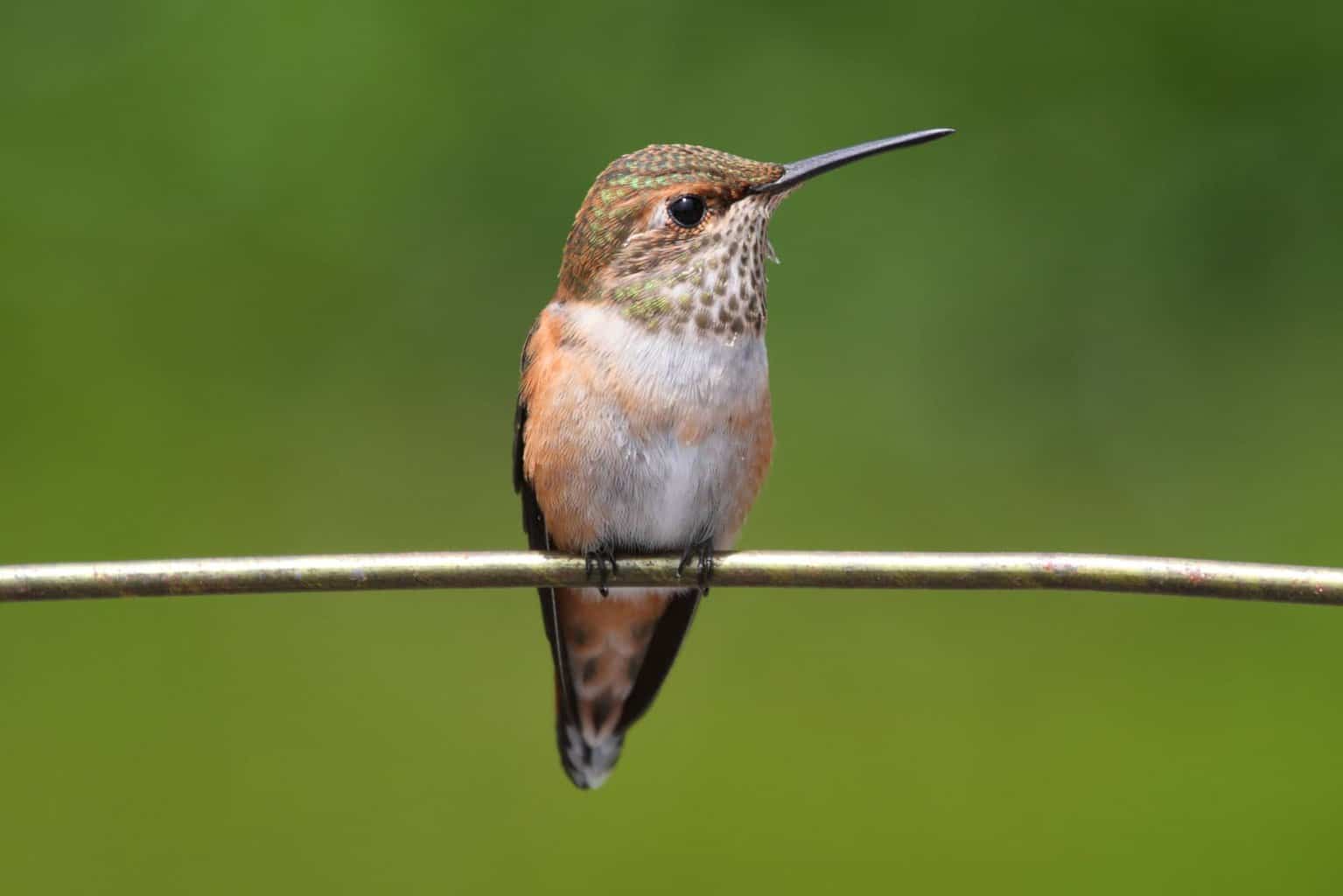
- Length: 3 to 3.5 inches
- Weight: 07 to 0.14 ounces
- Wingspan: 3 inches
Description:
The male Allen’s Hummingbird has a beautiful copper-green back and forehead, an iridescent reddish-orange gorget, and a rust-colored belly, tail, and eye patches.
However, the female lacks a bright throat patch.
Further, juvenile Allen’s Hummingbirds look similar to the female Rufous Hummingbird, making it pretty challenging to tell them apart.
Additional Information:
Allen’s Hummingbirds are accidental in Pennsylvania, having only been spotted a handful of times during the winter.
Native to Northern America, Allen’s Hummingbird has all North American hummingbirds’ most restricted breeding range.
Males Allen’s are typically aggressive and territorial birds that chase other male birds up to several times larger than themselves to protect their food source and territory.
The Allen’s Hummingbird gets its name from Charles A. Allen, a famous Californian bird collector.
Conclusion
There are recorded sightings of seven different hummingbird species in Pennsylvania; some are extremely rare, while others are native breeders.
With over 400 other bird species, Pennsylvania is a tranquil escape with beautiful scenic views equally rich in wildlife.
So, if you’re interested in exploring a few other impressive bird species found in Pennsylvania, fly over to our next post on 24 interesting bird species to look out for in Pennsylvania.

